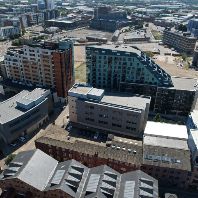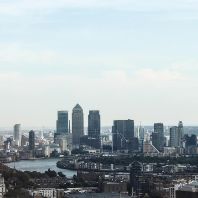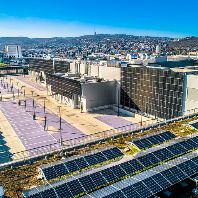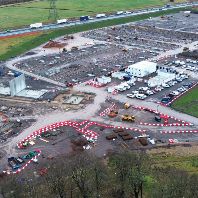UK commercial property delivered investors a 15.2% annual total return in 2010, according to the IPD UK Quarterly Property Index, in a year marked by polarized performance across geography and sector.
The annual total return was comprised of an 8.3% capital growth and a 6.4% income return. The final quarter of last year delivered a 2.8% total return, the product of a 1.3% capital growth and a 1.5% income return.
The IPD UK 2010 Market Results were delivered in both London and Edinburgh yesterday morning (February 3, 2011) by IPD's Research Director Malcolm Frodsham and Ian Cullen respectively.
At the IPD/IPF PDIG Quarterly Briefing in London's Gibson Hall, Frodsham explained that the underlying last year's 8.3% annual capital growth was a disconnect between falling yields, which had a positive impact on capital values, and modestly falling rents, which mitigated capital appreciation.
Yield impact was 10.0%, while rental growth which delivered the first positive contribution to capital growth for two and a half years in Q4 at 0.1% was -0.4% over 2010.
Frodsham told delegates: "There are remarkable parallels with the current cycle and that of the early 1990s. Rents have recovered much more quickly this time around when it reached this point in the 90s cycle what followed was an 18-month lull in which rental growth hovered slightly above and below zero.
"That is what is interesting now: are we going in a phase of zero to slightly negative rental growth until things start to pick up again around June 2012? That's not a strong outlook for real estate, but we can see how far through this cycle we are we can see the light at the end of the tunnel."
At the IPD UK 2010 Market Results in Edinburgh, Co-Founding Director Ian Cullen told delegates at Edinburgh's Merchant Hall: "The perverse result is that the positive yield contribution for the first half of the year is more than sufficient to account for more than 100% of capital growth. So it's all down to yields and that is despite yet another year of flat or negative rents. And the two key components of capital growth were yet again pushing in opposite directions."
He added: "Income is going to be crucially important in a flat market, and income duration is of increasing importance. Looking at spot yields, in every single case there is a yield penalty for short income duration. It is an interesting case to look forward too, given we should not expect yield-driven growth in the next couple of years."
Performance driven by sector and geography
Reflecting on the performance by segment, Frodsham told delegates: "Central London offices were the stars of the show with City Offices slightly ahead, at 23.9%, followed by West End Offices at 23.1%. Outside London, offices have been lagging for the last five quarters."
Cullen explained: "2010 was a year of two markets with central London Offices dancing to a tune of their own."
Standard Retails performance was divided by geography South East performing strongly, at 17.4%, while the rest of the country was someway weaker, at 11.4%. "Performance was actually even more polarized than these figures suggest, the real strong performance was in West End Standard Retails," Frodsham explained.
Shopping Centers were the third strongest segment performer and topping the Retail hierarchy, at 17.5%, recovering from what Frodsham described as "its annus horribilis in 2009" when they delivered -6.2% and were rooted to the bottom of the segment performance table. Elsewhere, Industrials fared well, again with a notable stronger South East performance, at 11.6%, compared to provincial Industrials which returned 9.9%.
Frodsham explained: "The differences in returns came from two main factors: firstly, a full year of central London Office rental growth, at 6.0% surprisingly eclipsed by central London Retails' 6.8%. But the rest of the market saw rental values of between -1% and -3%. Secondly, shifts in yields were strongly in favor of Shopping Centers, Retail Warehouses and central London Of















